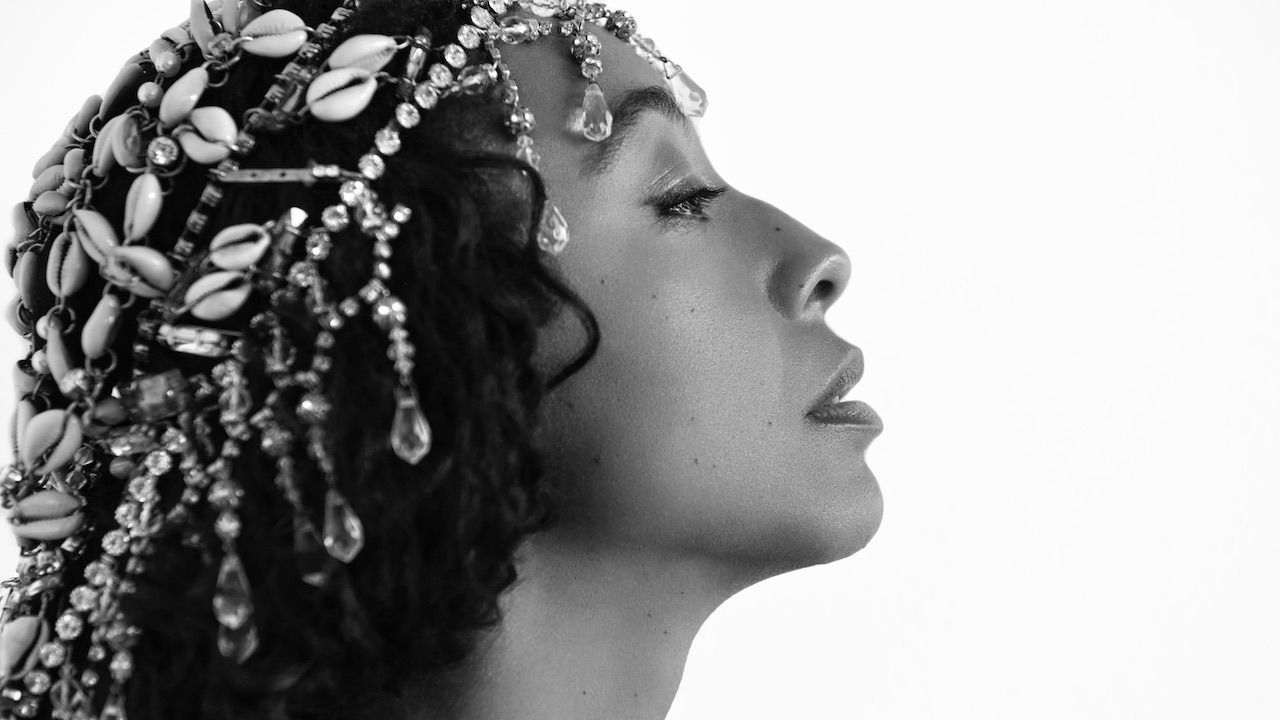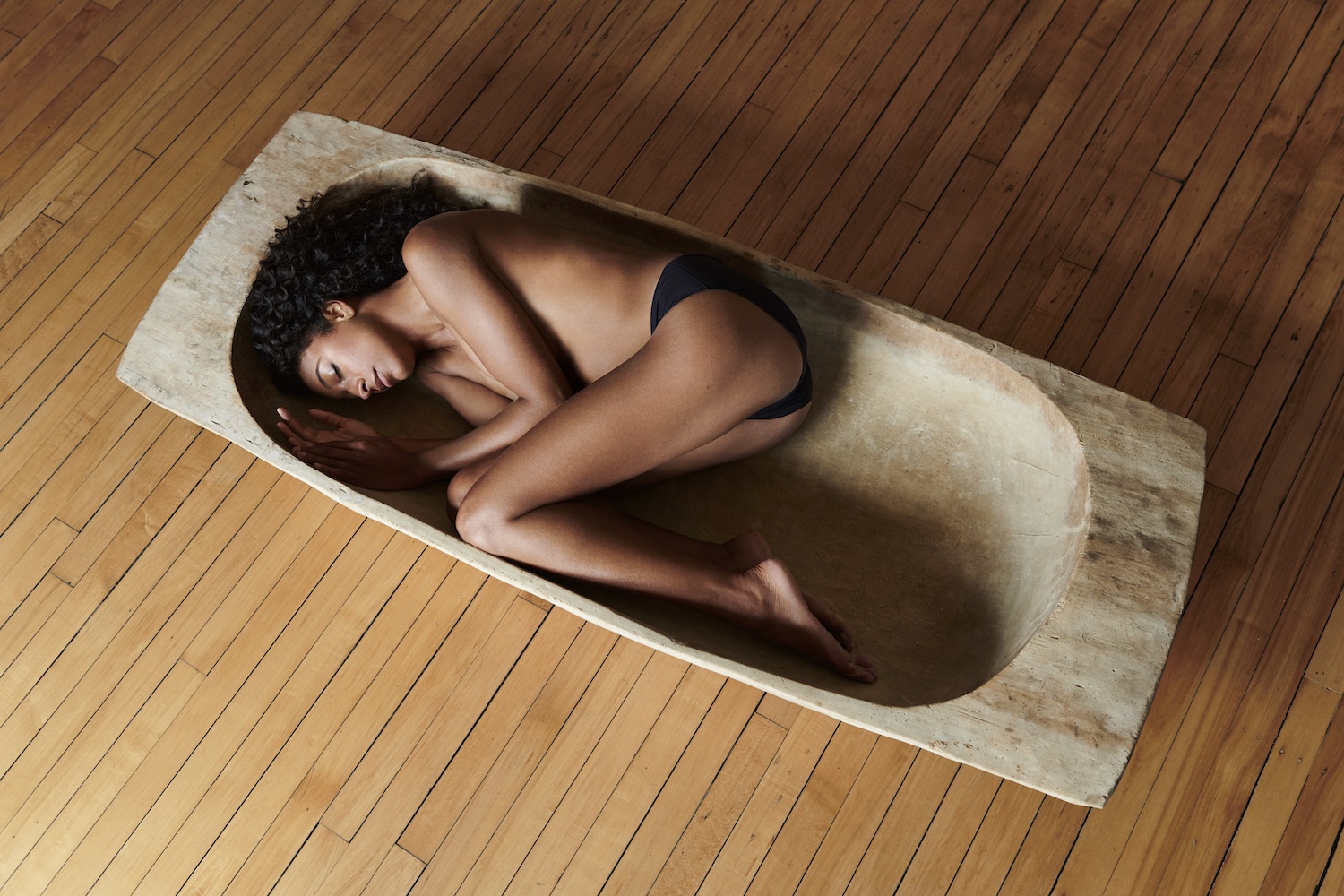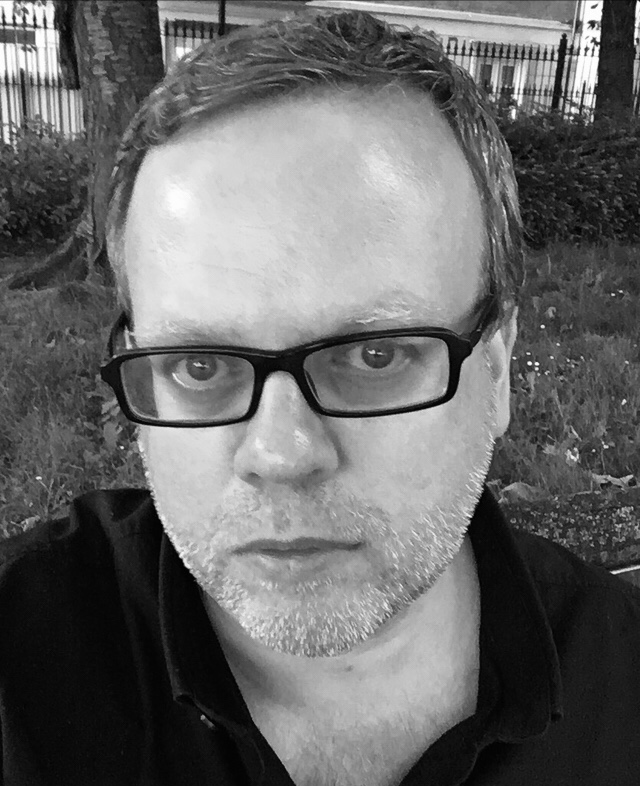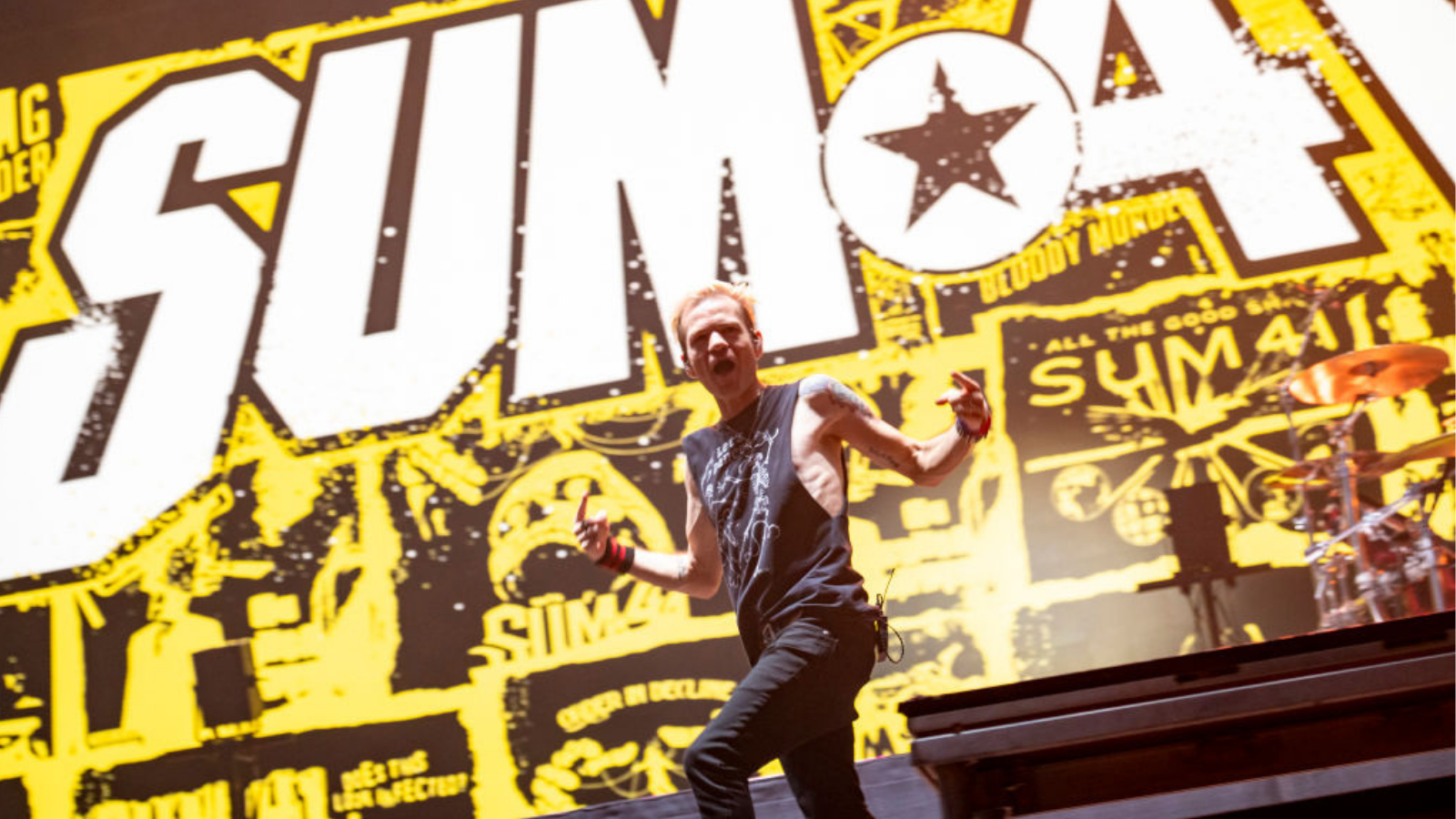“I understood anger, I identified with outsiders... when I looked at the shiny happy people, they didn’t make sense to me”: rage, race, revolution and the fabulous rebirth of Corinne Bailey Rae
With Black Rainbows, Corinne Bailey Rae has made the most astonishing album of the year. As she explains, it's a record that she simply had to make, a work of art that has changed her forever

There’s a figure from Corinne Bailey Rae’s past who cast such a dark shadow that even now, 25 years on from their last contact, she dare not say his name aloud out of a concern of reprisals. Born into a well-known, well-connected, music industry family, this individual briefly looked after the Leeds-born singer-songwriter’s career, back when she was a teenager fronting a grunge/riot grrrl-inspired indie band called Helen. In 1998, the band were offered a record deal by Roadrunner Records, a deal which evaporated when their bassist got pregnant, after which their suspiciously silver-tongued mentor simply stopped answering his phone, and disappeared. Soon enough, this man was handed a prison term on charges which must remain undisclosed, Helen broke up, and their devastated, disillusioned singer had no option but to move on with her life.
This summer, however, the world was offered a glimpse of what might have been. New York Transit Queen - 1 minute and 49 seconds of effervescent riot grrrl punk, featuring crackling, distorted riffs, an irresistible chant-along chorus and a` whole heap of sassy, bratty, 'fuck you' swagger - is that rare sort of song that stops you dead in your tracks, so joyous and uninhibited that it makes you forget to breathe. The lead-off single from Black Rainbows, Corinne Bailey Rae’s fourth album, it was simultaneously a call back to the singer-songwriter's teenage love for loud, unapologetic, transgressive noise, and also a foreshadowing of things to come. For Black Rainbows is Corinne Bailey Rae as you've never heard her before, transformed, reborn, revitalised, untethered and free. It's a thrilling declaration of independence, the true sound of liberation, and the finest, freshest, most fearless record of 2023.
It's also an album deeply rooted in history, in past lives, in violence, pain, misogyny, intolerance and brutal narratives of racial capitalism that continue to profoundly impact upon the present. And it's just one facet of an interdisciplinary, multi-platform exploration Bailey Rae intends to thread together via a dance piece, visual art, books, lectures, and more in the months and years to come.
It's a lot to absorb. So let's start at the beginning.
I knew when I walked through those doors that my life had changed forever
In 2017, while on tour in America, Corinne Bailey Rae paid an early morning visit to the Stony Island Arts Bank, a 17,000 square feet former savings and loan facility on the south side of Chicago that has been repurposed into a cathedral of Black art.
“I knew when I walked through those doors,” she says, “that my life had changed forever.”
Owned and curated by renowned artist Theaster Gates, the Stony Island Arts Bank, at 68th and Stony Island, is home to art and artefacts that “honor black excellence and confront the traumas of the past”, according to a sign at its entrance, which also states, “Black people matter, Black spaces matter, Black objects matter.”
Among the archival collections housed within are books and periodicals donated by the Johnson Publishing Company (JPC), publisher of Ebony and Jet magazines, the personal vinyl collection of DJ Frankie Knuckles, the godfather of house music, and the Edward J. Williams Collection, approximately 4,000 objects of “negrobilia” that make use of stereotypical, derogatory images of black people, including postcards depicting lynching and ash trays sculpted in the images of black children.
“Just to be amongst all that history was really stimulating,” says Bailey Rae. “Some of this stuff I knew about, but some of it was stuff which I feel like I've been searching for - whether answers, or photographs or newspaper articles - for my whole life. And I'd been told, 'Oh, that stuff wasn't well documented.' And then looking around all these problematic objects from America's past which had been collected to take them out of circulation... it was just mind-blowing."
At the Arts Bank, Bailey Rae had the opportunity to peruse two-time Pulitzer Prize-winning photographer/filmmaker Lucian Perkins Hard Art book, documenting pivotal gigs in the nascent Washington DC hardcore scene in 1979, with bands such as Bad Brains, Ian MacKaye's Teen Idles and his younger brother Alec's group, The Untouchables.
“There was this photograph of a band playing, and some in the audience were kind of folding their arms, not quite sure about this music," she recalls. “But there was this little black girl on the front row, and she’s looking at the lead singer with this expression of pure glee on her face at this rule-breaking noisy music. She’s just enraptured. I thought, I wish I had seen this photograph when I was screaming in my indie band Helen, and I was the only black girl, not just in the band, but in the room.”
“I felt a lot of anger when I was there because I was peeling back a kind of truth that I hadn’t known.”
In that grunge/alternative scene, people were saying, 'No, all is not well, I'm not okay.'
For the teenage Corinne Bailey, discovering indie music and grunge - “Nirvana, Belly, Veruca Salt, Hole” among others - was nothing short of revolutionary.
“I saw myself in these bands,” she says. “Being a working class girl, being a child whose parents were divorced, being a black girl, I felt I had an alternate perspective on the mainstream. Dance music was really big at that time, and everyone who was a part of that scene seemed kind of happy, but in the grunge/alternative scene, people were saying, 'No, all is not well, I'm not okay.' I understood that anger, that rage, that idea of feeling ill-at-ease and dissatisfied with the mainstream. I identified with the outsiders. I knew that the way that society was structured was wrong, and when I looked at the shiny happy people, they didn’t make sense to me.”
As with earlier generations being inspired by punk's 'This is a chord, this is another, this is a third... now form a band' mantra, first printed in the fanzine Sideburns in early 1977, the music-obsessed teenager found the simplicity of grunge's most linear artists liberating.
“When I listened to music on the radio in the late '80s, it was great,” she stresses, “but as someone who played music at school, there was such a chasm between being able to play, you know, a few chords on the guitar versus a Michael Jackson song, with all complicated jazz chords, produced by a jazz arranger, played by all these brilliant, virtuosic people. And that's why Nirvana, for me, like for so many people, was a revelation, because you could suddenly hear it was just a few chords on guitar.
“My friend recorded Nirvana's MTV Unplugged performance and you could see what Kurt Cobain's hands were doing, and we'd watch it transfixed, realising that these amazing songs were largely played by moving barre chords up and down. Which meant that when we learned a few barre chords the world was opened up to us, because suddenly we could write songs too. And write songs like Belly or Hole or Juliana Hatfield would, with lyrics that read like diary entries, not like florid, complex metaphors and rhymes, just like, This is what I'm thinking, this is what I'm feeling.
“Juliana Hatfield had that song, My Sister, where the lyrics were, 'I hate my sister, she's such a bitch. She acts as if she doesn't even know that I exist. But I would do anything to let her know I care. But I'm only talking to myself 'cause she isn't there.' So you could write the thing that you'd tell your best friend on the phone, or the thing that you would scribble in a diary, and half hope that no one found. That was new to me. It was very different to you know, a Stevie Wonder song that had been written for Michael Jackson. It made it very real. That music was such a big cultural movement, and it made it that being in a band wasn't some weird, niche thing. I really, really loved it, you know, I really felt that I found my identity in making that kind of music.”
When Helen fell apart, the teenager enrolled at Leeds University to study English, and took a part-time job working in the cloakroom of a jazz club. There she met Jason Rae, a talented, charismatic jazz saxophonist from Aberdeen: the pair married in 2001, by which time, having access her partner's huge record collection “hip-hop, soul, funk, jazz – all this extraordinary music that I suddenly had a way in to”, as she later told The Guardian, she was quietly recording jazzy, soulful pop songs that were, “chilled-out, acoustic, kooky and atmospheric.” In January 2006, the BBC website's annual 'Sound of...' poll tipped Bailey Rae as a future superstar: three months later, introduced by brilliant singles Like A Star and Put Your Records On, her self-titled debut album topped the UK albums chart.
Before the year was out, the young singer/songwriter won the Best New Act category at both the MOJO and Q magazine awards, and Best Newcomer and Best UK Female at the Mobo Awards: three BRITs nominations, and three Grammy nominations followed. In America, Corinne Bailey Rae, the album, reached number 4 on the Billboard 200 chart. It would ultimately sell north of four million copies worldwide. These were, by any measure, remarkable achievements, but the grounded, gracious Yorkshire artist took it all in her stride.
The latest news, features and interviews direct to your inbox, from the global home of alternative music.
“It was really wild, very exciting,” she reflects. “But it helped that I was 26 then, not 19 and naive anymore. All my friends were musicians, so the idea of playing four or five gigs a week was perfectly normal, but for me, it was all happening now on this different scale. So I'd be like, I've got a gig tonight, and Prince is coming. Or, I've got a gig, then I'm going to meet Stevie Wonder. Or playing at the Grammys with John Legend. Or flying in a private jet to Oprah. We made the record independently of any label, and so then have it kind of go off into the world without me was a new and brilliant and fun thing.”
At the peak of this high-flying success, however, tragedy brought Bailey Rae crashing down to earth in the most brutal, heartbreaking manner. On March 22, 2008, a telephone call from a female police officer informed her that her husband, at the time a member of Mark Ronson's touring band, had been found dead in a friend's flat in Leeds, following an accidental overdose of methadone and alcohol. Jason Rae was 31. At the time, Bailey Rae had already started work on her second album, which she envisaged would lean more towards a more upbeat, guitar-driven indie rock sound, but by the time The Sea was completed in 2010 it was, understandably, a darker, weightier and more contemplative record, dealing with loss and grief and heartache and finding beauty and truth in the darkest, loneliest hours.
My heart just couldn't get back up to those earlier innocent, carefree times
“I definitely felt like the label would have been happy if I could have made something breezy,” she reflects. “And I did really try, like the song Feels Like The First Time I really tried to get like a breezy, lifting-up song, but my heart just couldn't get back up to those earlier innocent, carefree times, I just couldn't get them back at all. When I listen back to it now, I can really hear myself trying to lift off the ground, but it was like my feet were set in the concrete.”
Making her third album, 2016's The Heart Speaks in Whispers, Bailey Rae admits now that she was aware of pressures and expectations both external and internal, and self-consciously sought to replicate the soulful sparkle which so beguiled listeners on her best-selling debut record.
“When I hear The Heart Speaks In Whispers now,” she muses, “I'm really glad that I was still able to listen to my inner voice, and to, you know, make something that was about intuition and soul and quietening things down so you could really hear your heart speak. But I'm kind of amazed that I managed to do it, because I did feel a massive amount of pressure to kind of recapture where I was. The record took so long to make - it was almost like I wrote three records instead of one - and every time I thought I had something, I'd end up kind of gatekeeping myself where I'd start to think, Hmmm, well, that doesn't sound like an international mega-smash, so what's the point? I was good friends with Mark Ronson, and he was absolutely smashing it everywhere, constantly, and I started believing that the only way to truly make a mark was to be always on the radio, and that really got in my head, and slowed me down.
“The need for a big win, a big reward for everyone's faith and support at the label was definitely in the air, and you having that growing awareness that your success, or lack of it, has real-life repercussions for those who work closest with you, on their careers, and their prospects, and their security. You sort of realise that it's not just about you, it's about the bigger picture, and that's a weight to bear.”
These intrusive thoughts, naturally, did not dissipate as Bailey Rae embarked on her 2017 US tour in support of the record, which peaked at number 31 on the Billboard 200 chart, and at number 14 in the UK. And then, as previously mentioned, she was welcomed into the Stony Island Arts Bank by Theaster Gates, and her perceptions and artistic intentions were fundamentally altered. Bailey Rae actually began writing the songs for Black Rainbows before she’d even left the building on that initial visit, fired by the idea of giving a voice to the myriad characters whose lives were laid bare between its walls.
A post shared by Corinne Bailey Rae (@corinnebaileyrae)
A photo posted by on
People such as Audrey Smaltz, winner of the New York Transit Queen beauty competition in 1954, when she was 17-years-old, and the subject of the album's first single. (“I saw this photo of this girl hanging off a fireman's truck and I just thought, Who is this woman? What is this picture? I really liked her face, because she has this kind of innocent, joyous energy, but also, she's in control.”) People such as Harriet Jacobs, the subject of the beautiful, haunting, piano-led Peach Velvet Sky, whose autobiography, Incidents in the Life of a Slave Girl, recounts how she escaped her 'master' by hiding for seven years in a tiny, cramped crawl space in her grandmother's home. People such as the congregation of Ethiopia's Churches of Lalibela, who created their own place of worship by literally cutting into rock and digging downwards, a tale told in the experimental, spacey, jazz Afrofuturism of Before The Throne Of The Invisible God. People such as the countless millions of black children treated as less than human through history, examples of which are shared in the brutal, furious Erasure ('They made a cartoon of you / They beat you into lead, and made an object out of you / They put out lit cigarettes down your sweet throat / They fed you to the alligators').
Originally, Corinne Bailey Rae envisaged Black Rainbows as a side project, one she would not even release under her name, the idea being that she could exactly what the hell she wanted with it, without having to worry about radio-friendly singles, or catchy hooks, or conventional verse-chorus-verse song structures, or 'relatability'.
“I just thought, What if I could be exactly as weird as I actually am?“ she laughs. "If I want to have a nine minute dance song, why shouldn't I? If I want to tell this story via Afrofuturism, or electronics, or punky guitars, or Sun Ra jazz, who's going to stop me, other than me? Self-censorship is such a killer to creativity. So it's all in there, and it's all me.”
In an age where music is curated via algorithms, promoted via TikTok, and cynically packaged via 'features' and 'collabs', Black Rainbows is the most pure, instinctive and unfiltered release of the year. And critical acclaim for the album has been universally positive. 'Music that veers thrillingly between jazz, soul, electronica, metal, punk and balladry… God, this is great' The Sunday Times exclaimed. 'It’ll continue to uncover fresh layers of magic for years, while being enticing from the off,' notes Record Collector. 'On Black Rainbows, Bailey Rae comes of age,' wrote our own Alice Clark. 'It really is a revelation.'
I just thought, What if I could be exactly as weird as I actually am?
In conversation with Vogue, Corinne Bailey Rae was asked what she hoped listeners might take away from Black Rainbows.
“I hope people can get lost in it,” she replied. “Some of the themes are about connecting to your ancestors. All of us are part of a chain of survivors that have been able to pass down their genes despite war, poverty, famine, and genocide. We all have incredible people in our line.”
“I really do think it is possible for a person to wake up one morning and have a change of heart, to see or read or hear something that makes them think differently about the world,” she added. “The capacity for change is what makes me feel hopeful.”
Black Rainbows, then, exists as a starting point for conversations, not a full stop. And that there are more colours to be unveiled in this dazzling prism is perhaps the more exciting aspect of what is a beautiful, bold and brilliant career-highpoint from a truly fearless artist.


A music writer since 1993, formerly Editor of Kerrang! and Planet Rock magazine (RIP), Paul Brannigan is a Contributing Editor to Louder. Having previously written books on Lemmy, Dave Grohl (the Sunday Times best-seller This Is A Call) and Metallica (Birth School Metallica Death, co-authored with Ian Winwood), his Eddie Van Halen biography (Eruption in the UK, Unchained in the US) emerged in 2021. He has written for Rolling Stone, Mojo and Q, hung out with Fugazi at Dischord House, flown on Ozzy Osbourne's private jet, played Angus Young's Gibson SG, and interviewed everyone from Aerosmith and Beastie Boys to Young Gods and ZZ Top. Born in the North of Ireland, Brannigan lives in North London and supports The Arsenal.
